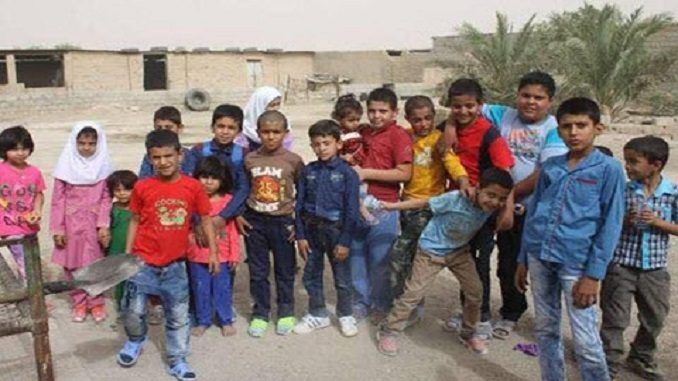
Several schools in oil-rich south western province of Iran do not have teachers. In addition, most of the facilities of these schools is worn out and unusable, World News reports. According to the reports, schools in Ghaizaniyeh district of Ahwaz do not have teachers and students are confused and wandering. There are 600 oil wells in this area. Ghaizaniyeh is located in the east of Ahwaz, where 38,000 people live in 80 villages.
Mohammad Bawi, a member of the districts’ council on Sunday, September 24th, said that this division had a total of 60 educational units in three segments, of which 40% of these schools remained without teachers and even bureau cadres.
According to this member of the council of Ghaizaniyeh district, officials of the Education Department in response to the council’s request said they are facing a severe shortage of educational staff and power and villagers themselves have to cope with their schools and their children and find a solution. The educational units in Ghaizaniyeh, in addition to the lack of teachers, suffer from a severe shortage of services, and most of the apparatus is worn out and unusable.
The regime’s governor in Khuzestan province had already promised three new schools to be delivered to Education Department before the start of the school year. But due to failure of providing adequate credit, the promise of the governor has not been fulfilled.
Despite the existence of more than 600 wells in the area, the Oil Ministry has not provided any help to improve the educational situation in the region.
Local people have repeatedly called on oil ministry to contribute to the improvement of the situation by building a few educational units and schools in exchange for the damage the ministry inflicted to the area and huge revenues it obtains from the oil wells in the region. Locals, however, have said that all of these requests have been rejected.
In the meantime, Ahwazi Centre for Human Rights (ACHR) reports that in an unprecedented step, the Iranian authorities turned a school for Ahwazi Arab students into a intelligence department in Ahwaz capital in recent days of September 2017. “
They acted upon order of the General Director of the Province’s Education as well as Ahwazi Governor with the opinion of the Ahwaz Security Council Chief, that Mofattah’s primary school in Alawi neighbourhood of Ahwaz capital, should became a intelligence department station. A reliable source quoted to ACHR that Mofattah’s primary school is located in a most deprived district of Ahwaz capital, where more than 1,000 Ahwazi student are study in the morning and evening times.
Fadhil Khamisi, head of the education department in Ahwaz, confirmed to “Hamshahri” news agency that the Iranian authorities were demolished the school and turned it into a intelligence department in Alawi (Al-Thawra) neighbourhood.
Many Ahwazi Arab activists believe that the aim behind turning the school to intelligence department is to spy on Ahwazi political and cultural activists and its completely secure and ambiguous intelligence place that will be used to torture the Ahwazi detainees by Iranian intelligence service.
The rate of illiteracy among Ahwazi Arabs is four times the national average in Iran. Illiteracy among men is 30-40% and among rural women it is as high as 80%. The result is generations of poorly educated Ahwazi Arabs with little hope of social mobility or economic improvement.
Low levels of literacy exacerbate the problem of poverty, which has fuelled social unrest in the Al-Ahwaz region. Although presidential candidates, including President Rouhani, and politicians have all pledged to improve native language education, no progress has been made in securing Ahwazi Arabs’ constitutional right to linguistic equality.
Human rights activists said that such practices are contrary to the commitments of the Iranian state to the “Aim 4” program launched by the UNESCO, which requires signatory states to abide by all its provisions, including building educational facilities and creating an effective, safe and non-violent educational environment.
